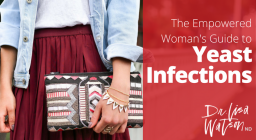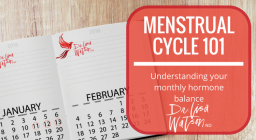
Purple, blue, red, pink – bright vibrant hair colours are all the rage these days! But grey? Is anyone really excited to see those grey hairs popping up? Why are they there, and what can we do about it? The answers may surprise you.
Aging Grey
Our hair follicles contain cells that make pigment, called melanin. This melanin gives your hair its distinct colour. As we age, these pigment cells start to die off and new hairs grow in lighter – in an array of shades from grey to silver and white. Once that pigment cell is dead, it won’t come back – the hairs growing from that follicle will never be coloured again.
And aging is inevitable. Dermatologists often quote the 50-50-50 Rule – 50% of the population will be 50% grey by 50 years of age. However, it differs for everyone. It seems that white people tend to start going grey in their 30s, Asians in their late 30s and black people in their mid-40s.
Grandma Was Great, and Grey
But it’s mostly your genes that determine how early you go grey – and how quickly! (Thanks Mum.) If your parents went grey early, it’s more likely that you will too.

Premature Greying
Genetic or otherwise, premature greying happens. If you go grey 10 years earlier than the average person does, feel free to complain about it! You can consider it premature if your hair is going grey before:
- 20 years old if you’re white
- 25 years old if you’re Asian
- 30 years old if you’re black
Contributing to the Grey
There are health concerns that can contribute to grey hair. If you’re convinced it’s not all in your genes, look at these factors to see if they are adding to your silver streaks.
- Lack of vitamin B12 – common in vegans and vegetarians
- Vitamin D deficiency – common in northern climates, especially during the winter months
- Low calcium – from poor intake or a parathyroid dysfunction, low levels are associated with premature greying
- Low iron levels – more common in women and vegans and vegetarians, low levels can contribute to greying and to hair loss
- Thyroid hormone imbalance – more common in women, impacting up to 1 in 6 women
- Vitiligo – an autoimmune disease that destroys pigment making cells
- Copper imbalance – copper can boost the production of melanin, the compound that gives hair its colour. But don’t just start taking it – copper needs to be carefully balanced with zinc or it can cause mood swings, depression and anxiety.
- Smoking – smokers are much more likely to go grey before 30 years of age – 2 ½ times more likely!
What To Do About Grey Hair
Dye it or don’t, but whatever you do don’t pluck it! Or at least don’t make a habit of it! Repeatedly plucking hairs can damage the hair follicle and result in kinkier, less healthy hair growing in.
Hair is made mostly of protein, so foods that are high in proteins are essential for healthy hair. Nutrients like iron, calcium, zinc, vitamin D, omega 3 fatty acids, B12 and B6 have also been found to support hair health. Some vegetarians and vegans, and people with digestive issues, may have difficulty getting enough of these from their food and might want to look at taking targeted supplements.
Eating every 4-5 hours may also help to support hair health. Hair is not considered an essential tissue by the body, and research suggests that if we go too long between meals the energy available to non-essential tissues could be reduced and could impact hair health.
Consider having your nutrient levels tested to see if they are negatively impacting your healthy hair. And meet with a Naturopathic Doctor to discuss your diet if you feel like it could use a boost as well!
Disclaimer
The advice provided in this article is for informational purposes only. It is meant to augment and not replace consultation with a licensed health care provider. Consultation with a Naturopathic Doctor or other primary care provider is recommended for anyone suffering from a health problem.
















